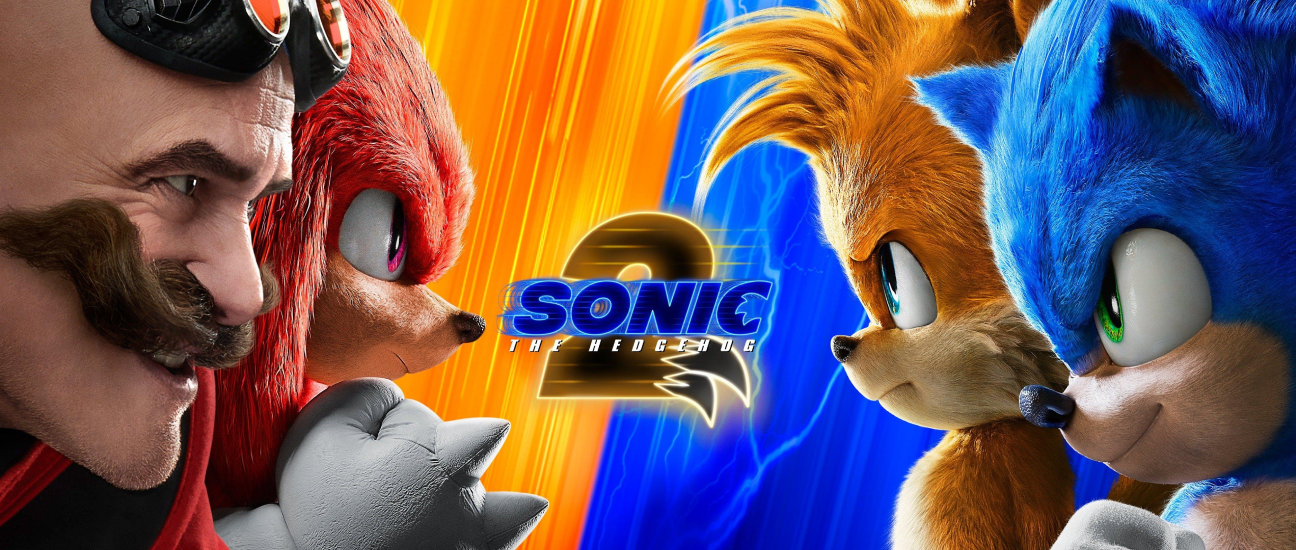
Retro Games vs. Modern Games: What Has Changed Over the Years?
Imagine a scenario where you are playing the iconic classics, the games that your elder siblings might reminisce about playing on consoles that look like relics from a bygone era. On the other side, you are playing modern games packed with dazzling graphics and immersive experiences.
These are retro and modern games that hold a special place in our hearts. In a retro game console, there’s a certain charm to the simplicity of 8-bit graphics, joystick buttons, and CRT monitors. On the flip side, modern games have lifelike visuals, expansive open worlds, and entertaining features that connect players across the globe.
Yet, retro games vs. modern games, the analysis isn’t just about the gadgets, features, and graphics. It’s about stories, challenges, and sheer joy these games bring to our lives. In this game, we take you through the history to tell you how both categories and the gaming industry have evolved over a period of time.
The Golden Era of Retro Games
The golden era of arcade games started in the late 1970s and extended through the 1980s and early 1990s. In the beginning, gaming consoles like the Atari 2600 were released, and later, Arcade games took over.
With games like Space Invaders, Pac-Man, and Donkey Kong, arcades became gathering spots for gamers of all ages. The thrill of trying to beat high scores, the camaraderie of playing side by side, and the discovery of new, innovative titles made arcades a cultural phenomenon.
The 16-bit era arrived in the late 1980s and early 1990s. 4th generation retro game consoles, like the Sega Genesis, Super Nintendo Entertainment System (SNES), Super Game Boy, LaserActive, etc., were launched in the market.
Games like Sonic and Super Mario World became everyone’s favorite. Characters like Mega Man and Ryu from Street Fighter also contributed to the growth.
During that time, there were amazing adventure games like The Legend of Zelda and cool sports games like Tecmo Super Bowl. People didn’t just play games; they became a part of a special culture, buying things with game covers, listening to game music, and exploring new game worlds. Many of these iconic titles also laid the groundwork for what we now consider the best story video games—games that combined memorable characters with immersive narratives.
Here are some examples of Retro video games that supported the growth of the gaming industry back in time.
Space Invaders (1978)

Taito Corporation released Space Invaders in 1978. It was a fixed shooter game where players controlled a ship that moved horizontally at the bottom of the screen, shooting at rows of descending alien invaders.
It was among the first arcade games to prominently display high scores, encouraging players to compete against each other. Due to its engaging features, it achieved widespread international success and became a global hit.
Tetris (1984)

Tetris introduced a unique and compelling puzzle gameplay mechanic. Players had to arrange falling geometric shapes to create complete horizontal lines.
The simple yet entertaining arcade game achieved massive success on multiple platforms like personal computers like Commodore 64, IBM PC, and handheld consoles.
Super Mario Bros (1985)

Super Mario Galaxy introduced a more narrative-driven approach. The game featured a heartfelt story of Mario, who had to rescue Princess Peach and save the universe from the nefarious Bowser.
The game featured well-designed levels with varied environments and challenges and allowed players to explore secret areas, find hidden power-ups, and discover warp zones. For its unique gameplay, Mario became a cultural icon, and the game’s influence extended to merchandise, movies, theme park attractions, etc.
Sonic the Hedgehog 2 (1992)

Sonic the Hedgehog 2 featured impressive graphics, smooth scrolling, and high-speed gameplay. The game’s emphasis on speed, momentum, and loop-de-loops provided a thrilling and dynamic experience.
The protagonist, Sonic the Hedgehog, attracted players with his distinctive blue color uniform, red shoes, and iconic attitude. The game also featured well-designed levels containing unique challenges and themes.
The Legend of Zelda: Ocarina of Time (1998)

Ocarina of Time was one of the first fully 3D action-adventure games, and it set a new standard for open-world exploration. The game’s vast and interconnected world, diverse landscapes, dungeons, and secrets offered a sense of immersion to players that was groundbreaking at the time.
The game’s targeting system and Z-targeting allowed players to focus on specific enemies or objects, enhancing combat and interaction. Moreover, the game’s time travel mechanic enabled players to switch between child and adult versions of protagonist Link. The advancement added a unique layer to the storytelling and puzzle-solving aspects.
How Modern Games Took Over the Industry?
The video game industry has become a billion-dollar business. According to Statista’s report, in 2022, it generated approx 347 billion U.S. dollars, among which 248 billion U.S. dollars came from mobile gaming only. According to experts, a new market is transforming and changing its dynamic every year. Emerging technologies are taking things into their hands and attracting players to the new-age games.
2000 to 2010 has been marked as the beginning decade for modern games. During this phase, games diversified into various genres, moving beyond traditional arcade genres like platformers and shooters. The use of mobile phones and gaming consoles become common, and games make their way towards them. This was the time when the gaming industry saw a substantial surge in mobile game development, as it became an opportunity for gaming companies to explore this business potential.
From 2010 to 2022, high-speed internet facilitated online multiplayer experiences, connecting players globally. Narrative-driven games, like “Final Fantasy” and “The Elder Scrolls,” series gained fame and a foothold in the industry.
Many modern games maintain the core mechanics of traditional arcade games, such as responsive controls and challenging gameplay. But modern games also focus on open-world exploration, role-playing, and simulation.
They leveraged advanced graphics technology and moved beyond pixel art to realistic 3D environments, orchestral soundtracks, and voice acting. Cross platform game development and the incorporation of social media accounts into gaming and streaming platforms like Twitch led to massive expansion and helped modern games acquire whooping revenues and extended player base.
In summary, modern games have taken the essence of traditional arcade games and expanded upon them in numerous ways.
Here are some examples of modern games that contributed to the growth of the gaming landscape.
Candy Crush

Released as a mobile game, Candy Crush capitalized on the widespread adoption of smartphones and tablets. Its availability on popular mobile platforms, combined with the ease of downloading games from app stores, facilitated its accessibility to a massive audience.
The game also highlighted the potential of casual and free-to-play games. It integrated social elements, allowing players to connect with friends, compete with them or leaderboards, and ask for or offer lives. This social aspect created a sense of community and competition among players, contributing to the game’s viral spread on social media.
Pokemon Go

Pokemon Go uses augmented reality technology to help players interact with Pokemon in the real world through smartphones. This innovative use of AR technology captured the imagination of players and set the game apart from traditional mobile games.
The game encouraged social interaction by creating real-world locations where players could meet and collaborate. This social aspect, combined with the ability to join teams, compete in Gym battles, and participate in special events, fostered a sense of community among players.
PUBG

PUBG introduced a large-scale, last-player-standing competition where a large number of players fight to be the sole survivor.
PUBG gained significant exposure through platforms like Twitch and YouTube, where popular streamers showcased their gameplay. The game’s intense and unpredictable nature made it entertaining to watch, contributing to its popularity.
Half-Life: Alyx

It is a virtual reality game known for providing immersive and compelling gaming experiences. The game leveraged VR to deliver a level of interactivity and immersion not seen in traditional gaming.
The game has detailed graphics, atmospheric sound design, and a compelling narrative, and its attention to detail in both visual and auditory aspects makes it an amazing game.
Alien Worlds

The game uses blockchain technology and non-fungible tokens (NFTs). NFT games enable players to own and trade unique in-game assets, fostering a sense of ownership and rarity.
The game’s play-to-earn model allows players to earn cryptocurrency rewards by actively participating in the game. This economic incentive has contributed to its popularity, as players can potentially generate real-world value through their in-game activities.

Retro Games vs. Modern Games: Who Won the War?
The choice between retro video games and modern games is subjective and depends on individual tastes and experiences. Both games have their unique abilities and bottlenecks that you need to consider before making the decision. Here are some pros and cons of both types that may help you decide.
Pros and Cons Associated with Retro Games
Here are some of the pros and cons of Retro games:
Pros
- Evoke a sense of nostalgia and help players connect with the gameplay emotionally
- Features straightforward gameplay and controls
- Accessible to players of all skill levels
- Appreciated for its charm and aesthetic appeal
Cons
- Face limitations due to outdated technology, graphics, and poor audio quality
- Lack the expansive features and complexity found in modern titles
- Hardware maintenance is challenging and expensive
- Lack the diversity and inclusivity seen in more recent titles
- Hardly support online multiplayer features, social and competitive interactions
- Face issues related to preservation and accessibility
Pros and Cons Associated with Modern Games
Here are some of the pros and cons of Modern games you should know:
Pros
- Advancements in technology and high-tech features
- Power-packed with stunning visuals and realistic graphics
- Offer immersive experiences using high-end textures, lighting, and special effects
- Provide expansive open-world environments for players to explore
- Give freedom to roam and discover, creating a sense of immersion
- Entertain players with dynamic storytelling capacity, realistic character animations, voice acting, and personalized experiences
Cons
- Controversial in-game purchases, such as microtransactions and loot boxes
- Prioritize visuals over gameplay, potentially leading to shallow or repetitive mechanics
- Sometimes released with bugs or incomplete features, relying on post-launch patches
- The cost of additional content make the overall gaming expensive
- Dependency on servers can lead to disruptions
Ultimately, the better option depends on personal preferences. Some players enjoy the simplicity and nostalgic value of retro video games, while others are drawn to the technological advancements and complexity of modern games.
The fact stays the same from an investment perspective as well. If you are putting money into game development, then study the market properly and refine your concept accordingly. Also, choose a reliable game development studio to outsource your project.
Why Hire 300Mind to Develop Games with Trending Technologies?
300Mind, the prominent game development studio, is your premier partner in designing retro classics and cutting-edge modern games. We capture the essence of classic gaming while delivering pixel-perfect nostalgia and timeless gameplay.
Along with it, our team thrives on innovation, leveraging state-of-the-art technology to create visually stunning and immersive modern gaming experiences. From pixel art enthusiasts to 3D modeling, our expert team handles every aspect of game development with expertise and creativity.
So, whether you’re yearning for the simplicity of retro classics or the complexity of modern masterpieces, 300Mind customize solutions that align with your unique vision and goals. Our adaptive development approach ensures that your game resonates with both nostalgic enthusiasts and the Gen-Z generation of gamers.
FAQs About Retro Games vs Modern Games
Retro games are classic video games launched from the 1970s to the early 2000s. These games represent an earlier era of the gaming industry. They had pixelated graphics, limited processing power, and simple gameplay mechanics. These games have a distinct charm that captivates gamers across the world.
Modern video games were developed after the 2000s with integrated technologies. They have advanced graphics, sophisticated gameplay mechanics, and immersive storytelling. They feature intricate narratives, expansive open-world environments, 3D models, virtual reality experiences, etc.
The main difference between old and modern games lies in technology, graphics, and gameplay complexity. Old games featured 2D graphics, low-quality processing power, and repetitive gaming experiences. In contrast, modern games are built using 3D graphics, realistic physics, complex artificial intelligence, online multiplayer capabilities, and virtual reality integration.
The choice is subjective and often depends on individual preferences. For example, older games have a nostalgic appeal, offering simplicity and a sense of charm that resonates with those who grew up playing them. On the other hand, modern video games leverage cutting-edge technology and provide realistic experiences.
In a way, you can say that modern games are tougher to play than classic video games. Retro games face challenges due to technical limitations and storage constraints and don’t have an expansive environment like modern games. New-age games are built using advanced technologies like cloud, AI, ML, AR, VR, blockchain, etc. They have an open environment that can be hard to explore and win over for novice players.








